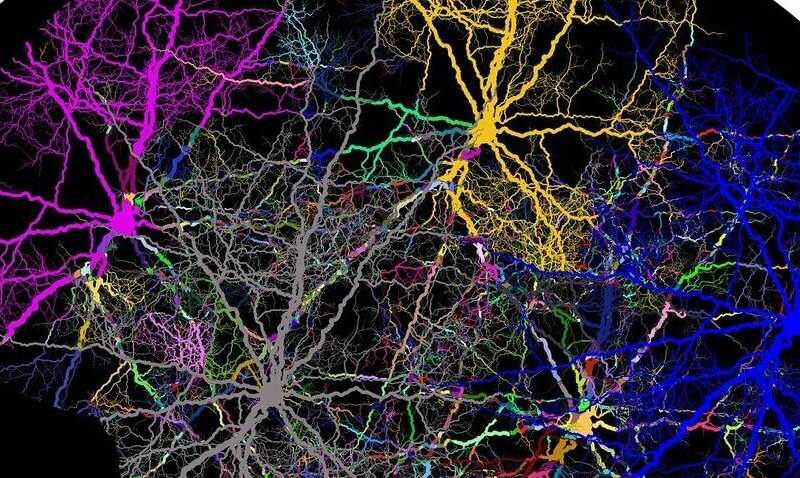Credit: Pixabay/CC0 Public Domain
The brain possesses a complex architecture of functional networks as its information-processing machinery. Is the brain's network architecture itself a target of disease? If so, which networks are associated with which diseases? What can this tell us about the underlying causes of brain disorders?
Building on the extraordinary progress in neuroscience made over the past 30 years, researchers from The University of Texas Health Science Center at San Antonio (UT Health San Antonio) published a study of 43 brain disorders – both psychiatric and neurologic – and strongly affirmed a theory termed the "network degeneration hypothesis." According to this theory, disease-related structural damage invades the functional networks used in human behavior and also recapitulates within "co-alteration networks."
Assessing metabolic demand within these networks, the study postulated metabolic stress in high-traffic hubs ("nodal stress") as a key underlying cause of network-based degeneration.
The research, published March 8 in the Nature journal Communications Biology, utilized BrainMap, a database of more than 20,000 published functional and structural neuroimaging experiments. The Research Imaging Institute at UT Health San Antonio is the birthplace and academic home of BrainMap. Confirming the impact of the BrainMap project, the National Institutes of Health in April renewed funding this work for four more years (years 14-17 of the project). This is a $2.4 million award.
The Communications Biology article was a meta-analysis of tens of thousands of experiments retrieved from BrainMap's database, said Peter T. Fox, MD, professor and director of the Research Imaging Institute. Dr. Fox and co-authors compared the connectivity patterns of large-scale functional networks used in normal behaviors with disease-related co-alteration networks and found striking overlap.
"The scope of structural and functional network correspondence is impressive," Dr. Fox said. "Fourteen of the 20 disease-related co-alteration networks observed spatially conformed to functional networks involved in normal behaviors – such as movement, perception, emotion, language, problem solving, and memory encoding and recall – to a highly significant degree."
Among the paper's findings:
- Atrophy or hypertrophy of gray matter follows network-based principles.
- Neurological diseases have stronger network associations than psychiatric diseases.
- Some diseases have more diffuse effects across networks than others. Huntington's disease, for example, affects nine networks and schizophrenia affects seven, whereas major depressive disorder and bipolar disorder affect two each.
"Researchers can take these multi-dimensional results as a roadmap for more specific investigations, since biologically meaningful regions of interest can be derived from the component maps shared in our study," Dr. Fox said.
Continued funding of the BrainMap initiative is crucial. "Part of the upcoming work is working with the Texas Advanced Computing Center at UT Austin to create a high-performance computing BrainMap Community Portal, a tool to make large-scale, complex, multivariate analyses of this type more readily performed by the research community at large," Dr. Fox said.
More information: Thomas J. Vanasse et al, Brain pathology recapitulates physiology: A network meta-analysis, Communications Biology (2021). DOI: 10.1038/s42003-021-01832-9
Journal information: Nature , Communications Biology
























